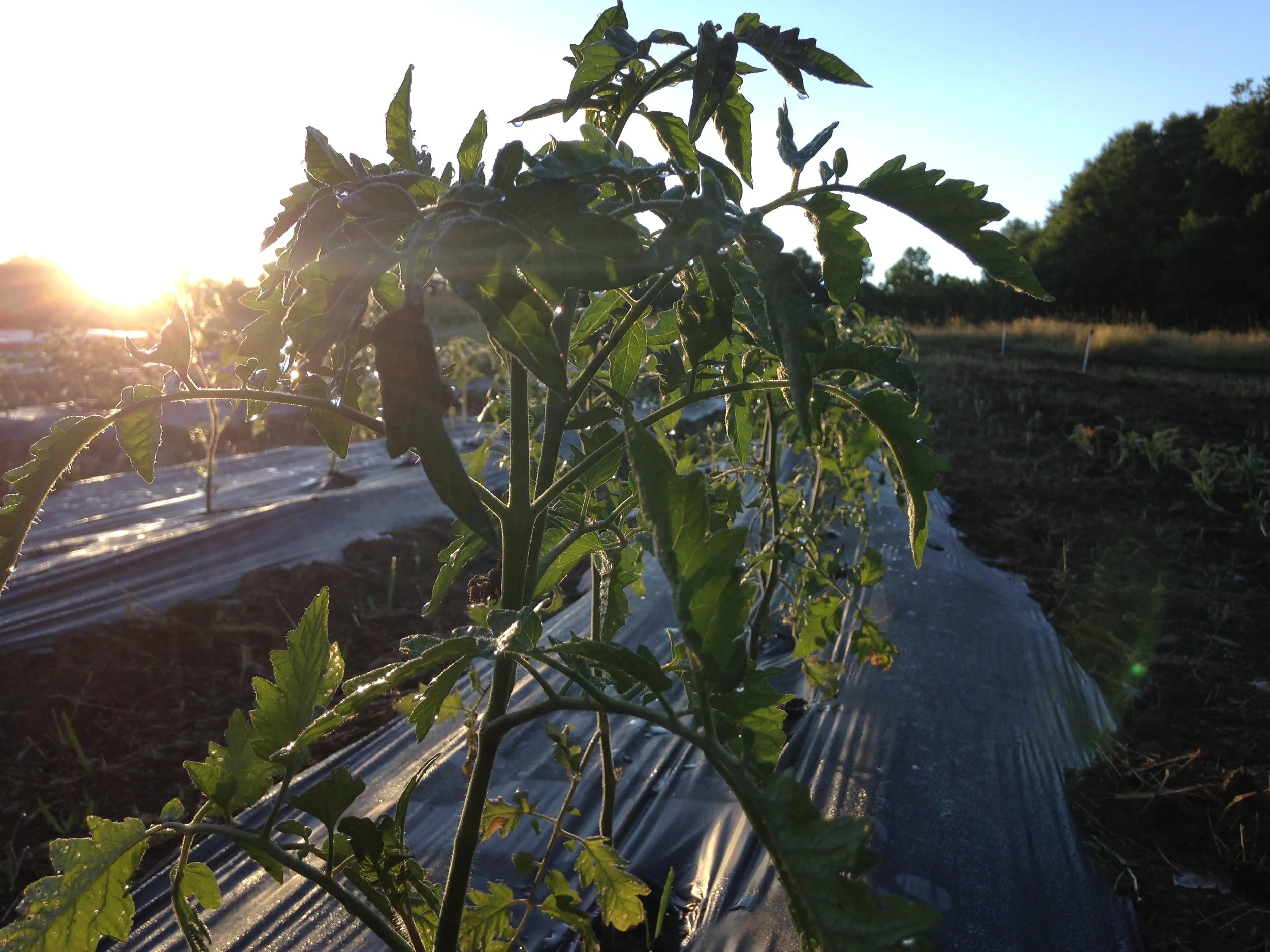We’re packing 55 CSA shares for Lucky Season No. 7. We have 20 half shares and 35 full shares, and the harvest is in for this week’s CSA. They’ll be packed tomorrow morning, and then distributed over three days.
Over the seasons, we’ve learned (sometimes the hard way) there are two keys to a smoother CSA week.
1.) Have a detailed, written plan for the week. When it’s written out, you might look at it and say, “Well, damn.” But you must have a plan in front of you. It’s better than looking around the farm and having that same thought. For the CSA, I make a list a week beforehand of the produce we think will be ready to harvest. Jason’s seeding and planting schedule aims to hit its mark every week, but of course the weather is always a big factor. I plan out what we’re going to harvest down to the exact number of kale leaves. Then, I map out when we’ll harvest. Having a clear plan makes any changes that crop up during the week less painful.
2.) Do. Not. Procrastinate. Never. Don’t do it. No. Do not. We mostly stick to the written plan, but if an opportunity presents itself, we take it. Like, say, the radish pulling went way faster than expected. Okay, then pick some spinach right now instead of tomorrow. We cut greens that store exceptionally well, such as kale and spinach, as early in the week as possible. When cut properly, in the cool of morning or evening, and immediately rinsed and stored in airtight containers in the cooler, they can keep for several weeks, so picking them a few days in advance is perfectly fine. Early on in my farm years, I had the ridiculous mindset that all CSA produce had to be harvested only one day before it’s packed. This is completely foolish. Fresh vegetables store well. Don’t make it harder on yourself than it needs to be.
This is our second season with about 55 members. For our biggest CSA season, we had 75 members. That was when we had a part-time helper. With Jason still working off-farm full time, we decided to keep the CSA around 55. The fact that we sell out every year is a positive indicator for future expansion.
But back to present day. Want to know how much we harvested for this week’s CSA? Here you go:
Kale: 20 pounds (This is 600 big leaves.)
Lettuce heads: About 100
Pea shoots: 7 pounds
Oregano: 4 pounds
Spinach: 6 pounds (This week, the spinach is only going in the full shares. Sometimes we alternate what the half shares and full shares receive. It all just depends on how much is ready to harvest.)
Parsley: 3 pounds
Green onions: Not sure how many. It felt like an eternity’s worth. Darned green onions. A tedious vegetable if there ever was one.
Radishes: About 3 bushels
Every season, as that first CSA week draws near, I get nervous. We still harvest for local shops and fill website orders every Monday, plus we’ve got to, you know, grow stuff. There are times when the weekly schedule looks totally bananas. There are times when I look around and think, this whole thing is nuts, isn’t it? Are we nuts? Well, maybe it is, and maybe we are, but, we’ve got a plan, and we just need to stick to it. And no procrastinating. No. Never. Huh-uh! Don’t even think about ! ;)
We’re loving the pick-up we bought last fall, even with all its quirks. It’s so easy to load bins in the bed. We’ve still got the Toyota RAV4 and its trailer, but the truck is much easier. That’s the whole lettuce harvest for the CSA this week. It’s about 100 heads. Time to take it home and let it soak before storing it in the cooler in bins.
~ Stella












